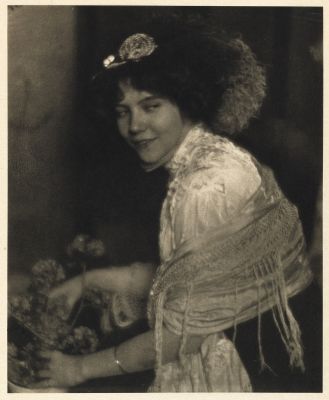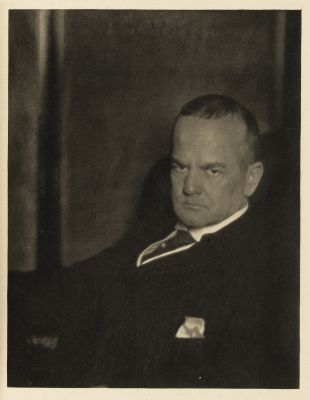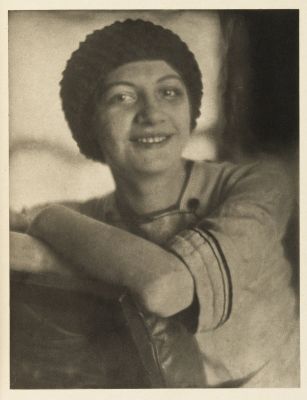
Title
Portrait – Mrs. G. G.Artist
Haviland, Paul B. (French, 1880-1950)Date
1909Process
PlatinumImage Size
20 x 25 cm
“During the years 1908-15, Paul Burty Haviland was a close associate of Alfred Stieglitz and a strong supporter of the Little Galleries of the Photo-Secession, popularly known as ‘291.’ A collector, photographer, businessman, and writer, Haviland was born and raised in Paris, the son of the china manufacturer Charles Haviland, and grandson of art critic and collector Philippe Burty. Following his graduation from Harvard University in 1901, Haviland joined the family business, serving as the New York representative of Haviland & Company of Limoges. After visiting “291” in 1908, he became an enthusiastic supporter of Stieglitz and the ideals of the Photo-Secession. In 1909 he began contributing articles to Camera Work and by 1910 was serving as the journal’s assistant editor. Haviland’s close association with Stieglitz and “291” stimulated his artistic talent and prompted him to begin seriously experimenting with photography. From 1908-15 he produced a number of photographic portraits, figure studies, and city views. His images appeared in several issues of Camera Work (1909, 1912, 1914), and in 1910 he took part in the important exhibition of pictorial photography at the Albright Art Gallery, Buffalo. Returning to France in 1915, Haviland was preoccupied with business concerns, finding little opportunity for art. Later in life, however, he did pursue photographic portraiture for a time. M.M.” (Artist Biography – Cleveland Museum of Art)
Haviland’s “Miss G.G.” appeared in “Camera Work. Number 28 (Alfred Stieglitz, David Octavius Hill, George Davison, and more. Note: another Haviland photo of Miss G.G. from the Alfred Stieglitz collection is at the Metropolitan Museum of Art. By the time this portrait was taken, Granger had appeared in three Broadway plays: “The Man Who Was” (1905), “The Brighter Side” (1905), and “Lucky Durham” (1905).
This photograph was in the collection of pioneering patron of the arts, Ginny Williams. Sotheby’s hosted a series of auctions featuring art and photography in the Ginny Williams Collection in June and July of 2020. Their press release began as follows, “Born in rural Virginia in 1927, Ginny moved to Denver, Colorado in the late 1950s with her husband, Carl Williams. An avid photographer herself, who studied with Austrian-American photojournalist and photographer Ernst Haas, her collecting journey began with classical figurative photography. Her passion and keen eye eventually prompted her to open her namesake gallery in Denver in the 1980s. While her passion for photography never waned, remaining a primary focus of both her gallery and private collection, her voracious curiosity quickly widened her curatorial focus. Over time, Ginny became increasingly courageous and experimental in her selections, venturing into Abstract Expressionism and Contemporary Art and following her artists themselves through gallery shows and museum exhibitions. As the years passed, Ginny became as much of a trailblazer as the artists she collected.”








